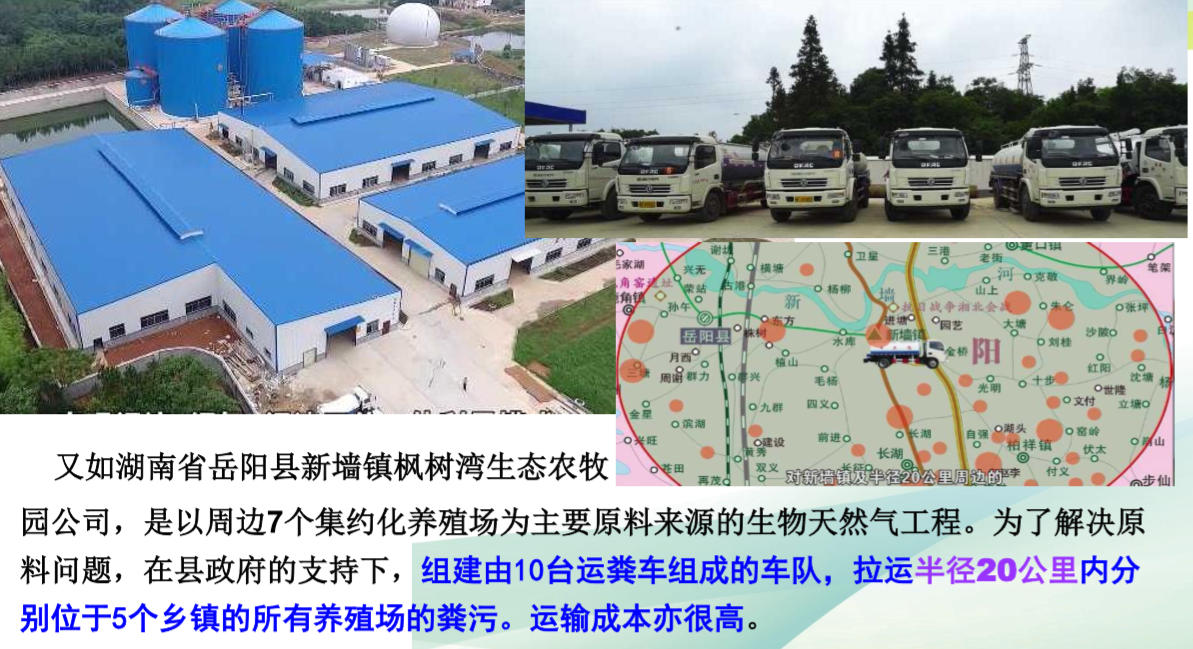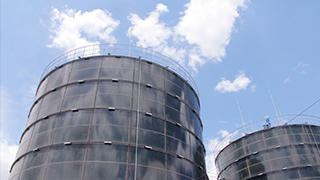For the first time, the International Energy Agency's Renewable Energy Report 2018 refers to bioenergy as a “negligible giant” and predicts that bioenergy will lead the global development of renewable energy in the next five years. These macro analyses and opinions have caused great repercussions.
The report emphasizes that bioenergy has always been a “blind zone” in the past energy analysis system. However, in fact, it is of great significance to the evolution and transformation of energy, including emission reduction of greenhouse gas, “greening” of vehicle fuels to reduce air pollution, reduction of the consumption of crude oil by the petrochemical industry and the increase of diversification of varieties and other effects. But, it has not received attention it deserves. Modern bioenergy receives attention far less important than wind and photovoltaic energy. This situation has been more pronounced in China. But now things are changing.
Biomass energy has three major functions which other renewable energy sources do not have and receives more attention.
Biomass combines the functions of environment, agriculture, rural areas and rural residents, and energy, and the focus of attention is changing with the changes in economy and social background. At present, as ecological civilization and green development are put on the highest agenda, its ecology and environment (including public health) functions have received unprecedented attention, which has significantly changed the situation of bioenergy being seriously ignored.
For example, biogas has incomparable carbon emission reduction function. In order to help achieve the ambitious goal of global temperature rise of no more than 1.5 °C at the end of the century, the Special Report released by the UN Intergovernmental Panel on Climate Change in October 2018 pointed out that large-scale carbon collection and storage have been proved by practice, and only the application of bioenergy, especially biogas, can achieve true negative carbon emissions.
For example, biogas has the function of revitalizing the rural economy. When formulating bioenergy policies, European and American countries quite emphasized the role of revitalizing the rural economy. The reason is that raw materials and primary processing of bio-energy are all from rural areas, and the construction of bio-energy plants can create a large number of direct and indirect employment opportunities. Therefore, in China, only by developing bioenergy industry can the integration of the primary industry, the secondary industry and the tertiary industry can be truly achieved.
The issue of "agriculture, rural areas and rural residents" has been dragging on China's building a well-off society and a modernized country. It is extremely difficult to obtain a fundamental solution. It can be foreseen that after the highest decision-making level wins the “Tough Poverty Alleviation” battle in 2020, the focus will definitely be transferred to the rural revitalization. Agriculture/rural industrialization and rural production/living environment remediation are the core of rural revitalization. At that time, the function of biomass energy distributed bio-refinery facilitating rural industry based on rural/industrial waste harmlessness + resource utilization and energy plant farming- processing will be more prominent, thus strongly promoting the growth of rural industrialization and new strategic pillar industry.
The State Encourages Biogas
Enterprises Need to Pay Attention to the Development of New Natural Gas Sources
In recent years, biogas has been favored by the national energy authorities and has become the “top priority” in the 13th Five-Year Plan on biomass energy. Professor Cheng Xu of China Agricultural University believes that at present we must pay full attention to the development of new natural gas sources, namely, broadening the sources of raw materials and opening up new ways to produce bio-natural gas while further expanding the scale of large-scale biogas projects.
At present, China's biogas industry mainly uses livestock manure and straw as raw materials and the microbial anaerobic fermentation process. In order to make this industry grow rapidly, expand the production capacity and form a strategically emerging industry in the true sense, it is necessary to learn from foreign advanced experience in expanding the range of raw materials.
First, develop a new way to prepare biogas by utilizing lignocellulosic raw materials that cannot produce methane using conventional microbial pathways and early initiate biomass gasification-methane synthetic natural gas;
Secondly, China's biogas is traditionally based on human and animal manure; while the raw materials for biogas production in European countries have been the remaining (active) sludge produced by domestic sewage treatment. In the future, China will produce 70 million tons of residual sludge in urban and rural areas every year and more than 300 million tons of domestic wastes that can be used as raw materials for anaerobic fermentation. The most ideal way to use it is to co-ferment biogas with livestock manure, straw and excess sludge. Roughly calculated, the annual biogas production potential of the above raw materials is 500-70 billion m3. Therefore, it is also important to coordinate the rural and urban areas, expand the surplus sludge and the source of biogas raw materials such as domestic garbage.
At present, the domestic urban construction department has begun to notice this trend in recent years. Producing biogas from the remaining sludge and producing bio-carbon soil with biogas residue are used as important means for reducing, recycling and securing the sludge.
Biogas companies have serious raw material cost (guarantee) problems. The first reason is most biogas companies have so far used livestock and poultry manure as the main raw materials. Due to the manure cleaning method of intensive cultivation, especially the manure cleansing way of the majority of pig farms, the organic matter content of the manure is very low. Therefore, the transportation of manure raw materials, especially long-distance transportation, is extremely uneconomical; Second, the special nature of biogas production: after anaerobic fermentation, a large amount of fermentation liquid is left - biogas slurry, which needs to be transported out of the factory for treatment, otherwise continuous production is unable. But this is equivalent to doubling the cost of transportation. This weakness is even more pronounced in rural China, where business scale is small. Many bioenergy companies have to spend excessive costs (60% or even 70% of the total cost) to solve the problem of collecting and transporting raw materials. Even if the emphasis is placed on the radius of the so-called “economic concentrated transportation”, the heavy burden is still unbearable; It has become an insurmountable fundamental obstacle to the efficient operation of energy companies.

Take an extra large livestock and poultry manure biogas production in a county in Hubei Province - biogas project (central plant) under the plan of an enterprise as an example. A livestock group has 10 large-scale pig farms in the county, with nearly 1,000 tons of manure produced per day. The average distance of these 10 farms is 20 kilometers, and the cost per ton/kilometer is as high as RMB 3, resulting in raw material cost of up to RMB 18 million, accounting for 71% of the total cost!
In fact, there are another four large-scale pig farms in the county. If we consider the need for the promotion of livestock and poultry manure throughout the county, the central factory will also undertake the manure treatment of small farms and farmers in 18 towns (farms) in the county, and the maximum one-way transportation distance can exceed 50 kilometers. Such high transportation costs have made it difficult for companies to make profits from the beginning.

Another example is Fengshuwan Farming and Animal Husbandry Company in Xinqiang Town, Yueyang County, Hunan Province. It is a biogas project with seven intensive farms as the main raw materials. In order to solve the problem of raw materials, with the support of the county government, a fleet of 10 transport trucks was set up to transport the manure of all farms in 5 townships within a radius of 20 kilometers. Transportation costs are also high.
This congenital weakness of large biogas project decides that it is impossible to "solving all problems all by itself". That is, a large-scale biological natural gas plant cannot replace all medium and small-scale biogas plants, and a large-scale biogas plant cannot alone solve the harmless treatment/resource utilization of human and livestock manure in the county; The right way is to drive the small and medium sized projects with big projects to form a distributed join force.
Future vision: To create a biogas “field” with an annual output of 1,000 cubic meters
In a long-term run, no matter conventional energy or new green energy, China's weakness is (bio) fuel and (bio) natural gas, instead of electricity or coal. In 2018, China’s dependence on oil and natural gas imports has reached alarming 70% and 45.3% respectively. According to the predictions by authoritative experts in the energy industry, these two indicators will exceed 80% and 50% around 2030. If there are not strong measures, China’s energy security will face a huge threat.
Can bioenergy contribute to reducing the external dependence on oil and gas? Shi Yuanchun, Cheng Xu and Zhu Wanbin proposed to build a “biofuel and biogas field” with an annual output of 100 billion cubic meters and 100 million tons in 2018.

Regional distribution of biogas fields in China
Drawn based on the data of 241 counties with centralized distribution among 586 livestock counties nationwide in 2017
Legend
Northeast “Biogas Field” Group
Northeast Hebei “Biogas Field” Group
Central Plains “Biogas Field” Group
Jiangsu and Anhui “Biogas Field” Group
Hunan and Hubei “Biogas Field” Group
Sichuan and Chongqing biogas “Biogas Field” Group
Biogas field is mainly based on livestock manure and crop straw, supplemented by urban organic waste and garbage as raw materials, to produce biogas (methane content 50-70%) in the place where livestock and food crops are concentrated, which is purified into biogas (methane content >90%) that is completely homogenous to conventional natural gas. In future, the way of biogas production through biomass gasification-methanation for methane content of >98% will be added. If each biogas plant with daily output of tens of thousands to hundreds of thousands of cubic meters of biogas or each biogas plant with an annual output of 0.1-0.3 billion m3 are regarded as a “gas well”, two or three thousand biogas well groups can form six big "gas fields". These gas wells are planned to be distributed in the areas where livestock and poultry and food production are most concentrated in the near future, with a total annual output of 100 billion cubic meters of biogas.
Conclusion
China's biogas industry is facing an unprecedentedly good situation. In order to achieve healthy development, in addition to focusing on solving the current problems of unsatisfactory gas production efficiency and low economic efficiency, we should also take a long-term perspective and deal with a number of strategic issues in advance. For example, open up new gas sources to expand and strengthen industries, improve the display of the significant role of biogas in controlling haze and reducing emission, and explore distributed production-use models, etc.
We firmly believe that biogas will become a powerful supplement and continuous gas source for conventional natural gas in China, become a widely used clean energy source and make a non-negligible contribution to green development.







